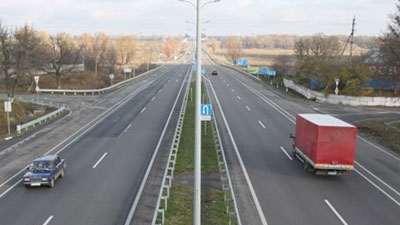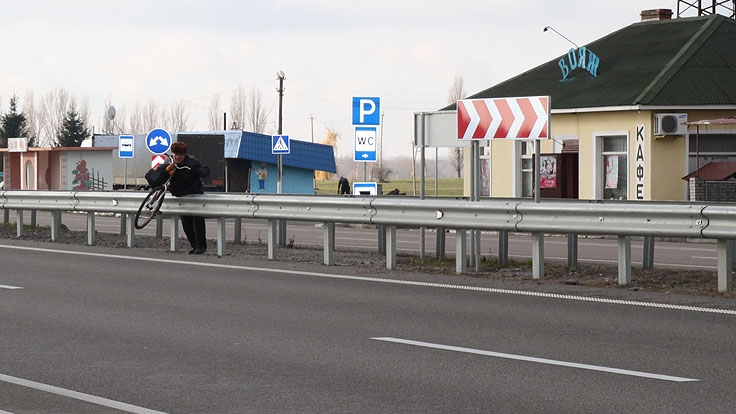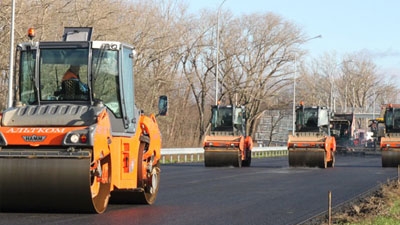Investing in Safety
Road engineers say the Simferopol-Yalta highway has lots of black spots, which are areas with a high concentration of road accidents. The number of crashes increases in the summer, when millions of tourists are on the highway, drawn by the area's natural beauty. With support from the World Bank, engineers widened the highway from two to four lanes and added new materials to improve the driving surface, all to make the road safer. In the most mountainous part of the road, workers rebuilt six emergency sidetracks; one of them was redesigned near the site of the Pavlograd miners' crash.
In the towns through which the road passes, crews built new sidewalks for pedestrians and hung new overhead lighting. Overall, they replaced about one thousand electric pylons along the roadway. They also installed modern reflective road signs. And in the Crimea, also for the first time, workers installed traffic signals for people with trouble seeing.
Changing Behavior
Locals are delighted by the improvements, but many people argue that more things need fixing, like drivers' attitudes and people's willingness to obey the laws. "The new road turned out very good, but it became a bit dangerous in some places. As a driver I use this motorway very often and I see that many drivers violate speed limits. Seeing a new surface of asphalt and a wide way, people step on the accelerator," says Denys Kovalyov, who lives near the highway.
The mortality rate on Ukrainian roads is four times higher than in the European Union. According to the World Bank, the annual economic cost of road deaths and injuries in Ukraine is estimated at US$5 billion. And roads—good fast, roads—are also crucial to a country's economy.





